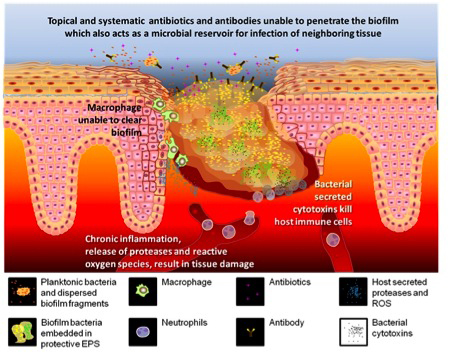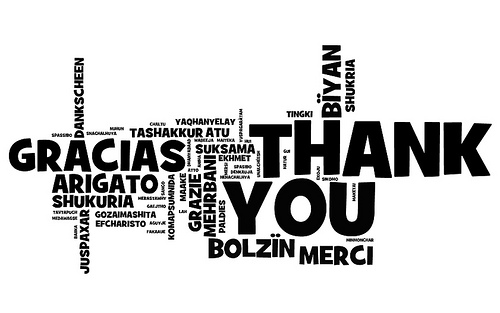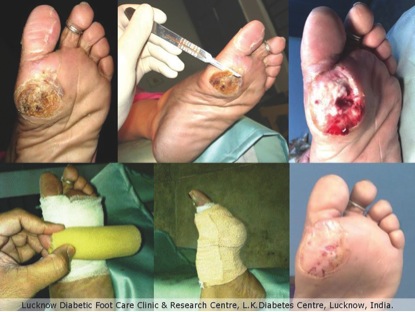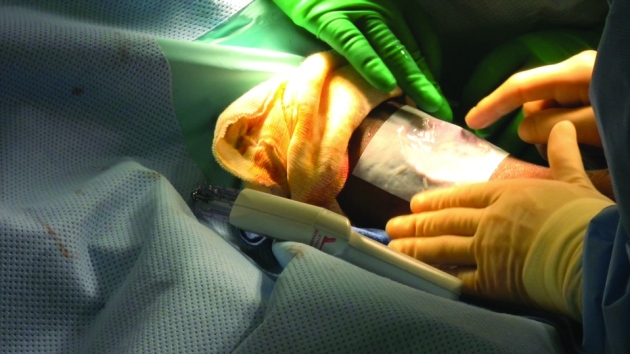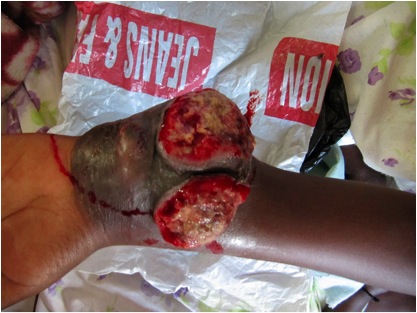woundsinternational
Just another WordPress.com site
Too much choice can be a good thing
After the recent EWMA conference in Brussels, Jason Beckford-Ball shares some of his highlights of one of the big events in the wound care calendar
Being somebody who has difficulty even choosing what they might have for dinner each night (I’m currently weighing the benefits of spaghetti bolognese and chilli con carne), I’m very glad that I’m not the person who has to work out where to hold international wound care conferences. For example, do you pick somewhere that has fantastic modern conference facilities and hotels, like Dubai? Do you prioritise the availability of good restaurants and nightlife offered by a bustling capital city like Paris? Or is it more important to choose a venue where people are going to want to travel to anyway, such as Cairo (the pyramids), Las Vegas (the gambling), or Geneva (the cleanliness). Just thinking about it makes me feel a little travel sick.
By holding its annual conference in Brussels, the European Wound Management Association (EWMA) seems to have got it right this year. Not only is Belgium’s capital the home of chocolate, strong beer and chips with mayonnaise, it is also handily placed on mainland Europe and full to bursting with historical buildings and famous landmarks.
Dressings
If only choosing where to hold a conference was all the wound care community had to worry about. Before the EWMA conference itself kicked off I attended a pre-event consensus meeting of wound care clinicians, which demonstrated that choice is also crucial when it comes to the viability of dressings.
The meeting was addressed by two design consultants who had been tasked with investigating how patients, rather than manufacturers or clinicians, regard wound dressings. Their research threw up some rather interesting results.
For example, despite some manufacturers and clinicians focusing on the long wear time of dressings, this was often negated by the fact that patients (especially those who were living at home or self caring), regard the feeling of being ‘clean’ as of primary importance and would change a dressing after two or three days, or when there was strikethrough, regardless of whether this was clinically effective. To the patient, the fact that they felt clean was more important than any clinical consideration.
This kind of information has massive implications for both dressing designers and clinicians, after all, there is little point in designing state of the art long-lasting dressings that patients are simply going to remove after a couple of days.
Diagnostics
Diagnosis is also predicated on choice and EWMA saw the release of a document that examines at the role of proteases in wound diagnostics. The panel of eminent wound care clinicians who compiled the document explain how elevated protease levels within a wound can present an unseen impediment to wound healing, rendering many clinicians at a loss at how to treat wounds.
In the future, the experts agreed that a diagnostic tool that identifies the presence of elevated protease levels would help clinicians to identify those wounds at risk of becoming hard to heal, as well as guiding clinicians as to the right type of dressings. The document can be viewed by clicking here.
Conference highlights
The Wounds International team had a stand at the conference and enjoyed meeting many of the delegates (hello if you were one of the people that popped by). We were delighted that many of you registered for the first Wounds International webcast on hard to heal wounds, which will focus on the problem of wounds where healing is prolonged or never achieved. The reasons why many wounds do not close are multiple and effective management lies in recognising the complexity of these factors. The challenge is to identify as early as possible when a wound is hard to heal. You can register for the Webcast at by clicking here, and be part of this innovative new phase in wound care education.
Finally, it was great to see so many clinicians from all over the world enjoying a dedicated wound care conference, with presentations that varied from ‘gene polymorphism predisposing to non-union of long bone fractures’ to ‘speed dating with the wound care industry: a novel approach to providing tissue viability education’.
With that level of choice, what wound care clinician could fail to learn something from their trip to Brussels…..
Jason Beckford-Ball from the WI Headquarters, London.
Routine operation
Doing the right things on a regular basis is vital to good wound care. But, as some of the speakers on Wounds International’s virtual conference demonstrate, sometimes circumstances just get in the way…
Routine is good. Routine is what keeps me going even when I don’t want to. Routine gets me up in the morning, propels me grumbling to the shower then forces me onto my bicycle for the journey to work, where, still half asleep, I set about dodging the central London traffic like a drunken sailor on shore leave. Without routine I would be tempted to stay in bed, read novels and eat toast.
Routine is also vital in health care. Techniques like hand-washing, observations for blood pressure, pulse and respiration and regular assessments for infection or weight loss, all rely on routine. Similarly, good wound care requires that clinicians monitor a range of factors, including the size of the wound, the presence of pain and the condition of the wound bed. Without routine, these elements can be easily missed and a wound can begin to deteriorate.
However, sometimes in healthcare there are also circumstances where the routine does not apply — where fractured healthcare services, poverty and local custom mean that instituting basic necessities like infection control are almost impossible.
Wounds International’s freely available virtual conference features speakers from around the world, some of them working in extreme conditions to provide the best wound care that they can.
Traditional Healers
Prisca O Adejumo, a Lecturer in the Department of Nursing at the University of Ibadan, Nigeria, talks about the Nigerian experience of pressure care. One of the cases she presents is that of a 45-year-old woman who’s past medical history included mastectomies to both breasts, following which she had developed an ulcer between the surgical sites. The wound was so extensive that her cardiac pulse was visible through the pericardium. She underwent extensive flap surgery to repair the wound, which was eventually successful.
However, as Prisca demonstrates, the extent of the woman’s wound would rarely be seen in the developed world and highlights that although excellent surgery and care may be provided in a country like Nigeria, what is often lacking is education. This means that meaning patients often present much later than is necessary having first exhausted other avenues of care. Not only had the woman actually ran away from the doctor when it was suggested that she needed a double mastectomy, never having heard of the procedure, but the problems she suffered subsequently also involved a reliance on traditional and religious healers, who told her variously to treat the ulcer by ingesting local gin, white rum, snails and palm oil and honey. Little wonder then that patients often present too late, resulting in extensive surgical procedures that could have been prevented.
Rabbit hair and grease
Another speaker, Bishara Atiyeh, a Professor of Plastic and Reconstructive Surgery in Beirut, talks about the challenges of burn injuries in Lebanon and the eastern Mediterranean, as well as in countries such as India, citing the high mortality rates for inpatient child burn victims (up to 20%) as evidence that medical care for burns victims in often ‘totally inadequate’.
High population densities, illiteracy and poverty contribute to the incidence, as does the poor reporting, of burn injuries. Again, successful treatment is not helped by a mixture of local practices and cultural influences, such as one severely burned child that Professor Atiyeh discusses who had been treated with a mixture of rabbit hair and grease.
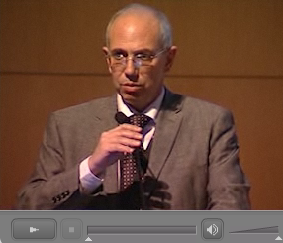
Bishara Atiyeh Clinical Professor, Plastic and Reconstructive Surgery, American University of Beirut Medical Center, Lebanon.
These two speakers show that around the world clinicians are working hard in challenging circumstances to provide wound care that, without the availability of expensive equipment such as antimicrobial dressings, makes use of basic routine wound care.
These online sessions provide a genuinely innovative opportunity to attend the Wound International conference, months after it actually took place. By simply logging on for free and watching these sessions you have access to some of the most groundbreaking wound care education right at your fingertips and can access it whenever you like.
You never know, you might even find that you want to make wound care education part of your daily routine…
Visit the Wounds International online exhibition for free at: http://emedia.woundsinternational.com/cape-town.
Jason Beckford-Ball from the Wounds International HQ, London.
Just a click away…
With the plethora of educational courses and study days on offer around the world, accessing the best wound care education can be a daunting prospect. But, perhaps the answer lies closer to home…
I struggle with too much choice. I can literally spend hours in my local DVD shop scouring the shelves before leaving with an Estonian art film and Miss Congeniality 2: Armed and Fabulous. When confronted with a takeaway pizza menu I have been known to assume the foetal position and emit a low wail and my first foray into internet shopping almost broke me — ebay was a labyrinth of choice that had me up until three in the morning feverishly bidding for a pair of Japanese Koi carp (I don’t have a pond) and a fake degree from Harvard Business School.
The same is true of medical education, especially in wound care. A five-minute trawl through Google (another bane of my life – what happened to the humble encyclopaedia?) told me that in the coming months I could attend the Annual Canadian Association of Enterostomal Therapists Conference in Montreal; the Wound Ostomy Continence Nurses 43rd Annual Conference in New Orleans and the Annual meeting of the Austrian Wound Association in Salzburg, Austria. If my thirst for knowledge was still unquenched, I could round off with a quick jaunt to the New Zealand Wound Care Society Conference in Christchurch, New Zealand. Phew.
Now I’m sure all these events offer excellent learning opportunities and the chance to meet wound colleagues from all over the world, but apart from trying to choose which one to go to, I simply don’t have the time.
The good news is that help is at hand. On the 13 April, 2011 there is a second chance to attend the Wounds International Conference in Cape Town, South Africa. OK, so you don’t get to climb Table Mountain like I did, but it does represent a unique opportunity to participate in a global wound care event without actually getting on a plane.
Wounds International encourages wide access to free education and much of the content from our first global conference will be available online. This will include a virtual exhibition, filmed sessions and a host of downloadable resources that aim to support the continuing educational needs of wound care clinicians worldwide. Among the individual sessions are:
- Wound infection: diagnosis, prevention and treatment with David Leaper
- Pressure ulcers with Prisca Adejumo (Africa), Keryln Carville (Australasia), Zena Moore (Europe)
- Wound Exudate with Greg Schultz (N America), Geoff Sussman (Australasia), Patricia Grocott (Europe)
- Chronic Wounds: Establishing an Accurate Diagnosis in Leg Ulcers with Helen Edwards (Australasia), Peter Vowden (Europe), Kathryn Vowden (Europe), Gary Sibbald (N America)
- Chronic Wounds: Tackling Lower Limb Oedema with John Macdonald (N America), David Gray (Europe), KS Bose (India)
So, if you don’t have the time to take a round-the-world trip and would rather learn as much as you can about wound care without leaving your desk, then the Wounds International Virtual Conference is for you. And the best bit? You get to eat your pizza while you watch…
For more information about the launch, click here.
Jason Beckford-Ball from the Wounds International HQ in London.
Travel sickness
Many Western clinicians visit developing nations to gain valuable healthcare experience, but what they find there can often be a shocking litany of trauma wounds and services blighted by poverty.
We’ve all been there. Your friends say you have to visit a place as it is really beautiful, but when you get there it is actually a little bit disappointing. It’s the travel version of seeing a poor Hollywood remake of your favourite childhood book. It happened to me in Venice. ‘Arrive by the canal,’ I was told, ‘it’s the most romantic sight in the world.’ In reality the water smelled of drains and I was ripped off by a distinctly non-Italian gondolier. Lesson learnt.
This weekend I was in another city fabled for it’s beauty, this time the dreaming spires of Oxford, England, but rather than taking in the sights, I was attending a wound care symposium that soon disabused me of the notion that everybody travels for pleasure. It turns out that in fact, some people actually seek out danger, poverty and trauma in an effort to take their expertise to those who do not have access to adequate healthcare services.
St Anne’s College was hosting a one-day symposium entitled ‘Managing acute and chronic wounds following major catastrophes in Haiti and Africa’, which focused on the response to the disastrous earthquake that struck Haiti in January 2010 and the ongoing difficulties of providing wound care in parts of Africa. Many of the experiences I listened to were not only genuinely shocking and insightful, but also provided a stark contrast with my own expectations of foreign travel.
The Gift of Pain
One of the speakers, Professor Andrew Boulton, gave a talk on the practical approaches to prevention and treatment of diabetic foot ulcers in developing countries, where he described type 2 diabetes mellitus as a 21st century epidemic, with perhaps 100 million sufferers in China and a similar number in India alone. I had read about the dangers of neuropathy and injuries due to lack of sensation in people with diabetic foot or leprosy, but Professor Boulton gave a graphic presentation of the problems faced by these people in India. I must confess I had never regarded pain as a gift, but as Professor Boulton explained, it is only pain that alerts us to tissue damage — unlike the people he saw in an Indian clinic whose living conditions were so harsh that there feet were regularly gnawed upon by rats at night, leaving them with terrible wounds.
Acid test
In one of the afternoon sessions, Marc Swan, a reconstructive plastic surgeon, discussed his experiences in East Africa, where poor healthcare resources mean that certain conditions such as cleft palate, that are eminently treatable with the right equipment, can have devastating consequences for infants’ chances of survival and can cause them to be shunned by their community. There were also examples of how poverty can have a devastating effect on people’s lives, such as the women who had been horribly disfigured by having battery acid hurled into their faces by jilted or jealous partners, accidents from crude farming incidents and extensive trauma wounds due to the prevalence of drink driving and the lack of seatbelts in cars. All of these wounds presented unique challenges to a Western surgeon used to having access to the best equipment and supplies.
On a more positive note, Mr Swan did highlight that the lack of basic equipment often drives people to improvise in surprising ways, for example, negative pressure dressings made from furniture foam and cling film and skin grafts being attached with superglue.
He also noted that in East Africa, the lack of healthcare staff means that each patient is accompanied by a family member or friend who caters for all their physical needs, such as washing, dressing changes and feeding, while they are in hospital.
Even though I didn’t manage to hop onto one of the ubiquitous open-top busses that circle the city, the speakers made sure that my day out in Oxford was still a worthwhile trip. I may have missed a lot of the sights, but I gained a unique insight into how difficult in can be to apply wound care in countries blighted by poverty and disease. I also, to my shame, learnt that there are more pressing concerns around the world than the price of a gondolier trip.
Launch of virtual conference
For further insights into how clinicians manage different healthcare situations in their own practice, log on to Wounds International on 13 April. We will be launching our online conference with free access to much of the content from our successful international event in Cape Town in February. This will provide access to clinical presentations, made easy workshops, posters and free papers, as well as a virtual exhibition.
This is a fantastic opportunity to take part in the conference and to share the resources online with your colleagues.
Other resources:
The diabetic foot in sub-Saharan Africa: A new management paradigm
The challenge of managing burn wounds in Uganda
Jason Beckford-Ball from the Wounds International HQ in London.
What wound care topic do you want to hear more about?
These shoes are made for walking
I’ve always thought it is possible to measure a society’s slide into wealthy excess by the way it turns everyday items into luxuries. A stroll through one of the fashionable department stores in New York, Paris or Buenos Aires would reveal a host of examples — kitchen accessories that resemble hand-held modernist sculptures, food that takes longer to unpack than it would to hunt and wall-mounted fireplaces whose primary function is to look delightful rather than cast any heat.
Perhaps the most obvious example is the humble shoe. In the West, the female shoe in particular has developed from something that protects our feet to a fashion accessory, available in every imaginable colour and style and able to impart a heady mixture of sex appeal and social status.
As a man who has little interest in shoes (I have two types — brown and black), even I know that a Manolo Blahnik is not a complicated Russian vodka cocktail, but rather a world famous shoe designer whose creations fetch incredible sums. Is it me or does it seem that with an estimated 1.4 billion people around the world living in poverty, something has gone a little awry?
The one-dollar sandle
Of course in many countries around the world people often go barefoot and a simple pair of rubber flip-flops is a luxury. The same economic realities apply to healthcare equipment in general and wound care supplies in particular, with the majority of people in the world having little access to simple medicines, let alone sophisticated wound care treatment such as negative pressure, antimicrobial dressings or compression hosiery.
But as someone famous once said, ‘Necessity is the mother of invention,’ and harsh conditions can often forge innovative solutions such as the particularly ground-breaking answer to the problem of diabetic foot ulcers developed by a team of doctors in India.
The forefoot plantar region is the most common location of diabetic foot ulcers and offloading body weight to reduce pressure is vital in the management of these lesions. Offloading methods include crutch-assisted walking, therapeutic shoe and custom splints. However, due to economics, these methods are not often available in the developing world. To provide a simple method of offloading, the team developed the Samadhan System (the Hindi word ‘samadhan’ means ‘solution’), which uses a rolled up piece of foam, some adhesive and a piece of elastocrepe bandage. This is worn inside the patient’s sandals and offloads the weight of their body from the affected section of the foot.
The system costs around $1 per patient, does not require special training and can be adapted for people of different body weights, allowing them to walk with a relatively normal gait wearing buckled sandals.
This kind of innovation was particularly evident at the recent Wounds International conference in Cape Town, where speakers from different continents presented ways in which they had adapted available resources in the absence of expensive equipment, offering solutions that are both cheaper and effective. As David Keast, a Canadian wound care specialist from the World Alliance of Wound and Lymphoedema Care, said: ‘The conference has a different focus, with presentations from areas with limited resources, which we don’t usually see.’
Despite all of the expensive wound care treatments that have been developed recently and the plethora of research into the best way to manage certain types of wounds, developments like the $1 dollar sandal show that sometimes it is the simple things that actually work the best.
Or to use another cliché, if the shoe fits….
For more inforation, see:
Innovative approaches for improving diabetic foot care in India.
It’s wound care, Jim, but not as we know it…
I’ve never been a particular fan of science fiction as a genre. While I can appreciate the appeal of creating a world where you can fly to the shops or be eviscerated by killer aliens (depending on your outlook), it all seems a little bit speculative. Sure I’d like the benefits of X-ray vision and being able to eat all my meals in pill form, but as it’s never going to happen, I can’t see the point of entertaining it.
That’s why I find it all the more unsettling when some of the stuff that they dream up in the movies actually gets invented, such as a global communication system that relies on the speedy transfer of electronic data, or the technology to potentially transplant pig hearts into humans.
It begs the question, what are they going to invent next — a hoover with a ball instead of wheels? Preposterous. Skin substitutes that can generate new tissue? Never.
Oh, hang on….
Of all the recent advances in wound healing it is the development of tissue engineered collagen scaffolds using human or animal tissue, also less scientifically known as skin substitutes, that I find the most bizarre — unsettling even. At the same time I can see that they have enormous potential to launch wound care into an entirely new direction and vastly expand the range of treatment options.
But how scary are they in reality?
These tissue engineered scaffolds are designed to stimulate or replace the body’s own extra-cellular matrix (ECM), which plays an important role in skin tissue regeneration and is the major component of the dermal skin layer. As well as providing a structural support for cells, the ECM also creates a reservoir of active molecules that can be rapidly mobilised following injury to stimulate cell proliferation and migration.
The last few years have seen a wide range of products enter the market. These include acellular matrices, which have had all the cells removed from the native collagen matrix during manufacture or are naturally absent. Products derived from animal sources (xenografts) are developed by harvesting living tissue (e.g. dermis, small intestine submucosa, pericardium, etc) from donor animals such as pigs, horses or cows. Products derived from human sources, i.e. donated human cadaver skin (allografts), undergo various processes to remove the cells and deactivate or destroy any pathogens. It is thought the removal of viable cells helps to prevent an adverse reaction by the host.
It may all sound like science fiction, but the important question is, does it actually work? So far, evidence suggests that when placed in the wound bed, the matrix can provide a temporary scaffold or support into which cells can migrate and proliferate, leading to tissue regeneration and ultimately wound closure. It seems that, especially in burns and chronic wounds, these products can have a significant effect.
However, the development of these technologies, derived as they are from animal and human sources, means that inevitably there will be religious and ethical concerns, such as the transmission of Prion diseases, the use of animals or the potential for the use of tissue derived from neonates. While it is important that companies are able to develop new and revolutionary products, this demonstrates why we also need healthy regulation.
After taking all of these elements into account, the possibilities of this kind of technology to help patients with wounds is enormous. It may not yet be the equivalent of the sick bay on the Starship Enterprise, where injuries were zapped away with a wave of Dr McCoy’s hand, but if this sort of advance can help to heal extensive burn wounds, for example, then we have to explore it.
So, now that we’ve cleared that up, I’m off down to the shops on my transportable jet pack. Who’s with me?
Find out more:
Acellular matrices for the treatment of wounds
Advances in tissue-engineered skin substitutes
Jason Beckford-Ball from Wounds International HQ, London
A shock to the system
I’m not ashamed to admit that, while obviously tragic, the coverage from the recent earthquake in Christchurch, New Zealand, left me feeling confused. It wasn’t the sight of buildings collapsing like CGI skyscrapers in a Hollywood disaster movie, or even the awful pictures of firemen and ambulance crews trying to dig people out from piles of rubble. After all, we’ve witnessed similar scenes in Haiti and India in recent years, with much higher death tolls and more widespread devastation.
What unnerved me was that for once disaster had befallen a modern city in a developed country. As well as the fact that most of the terrified faces flashing across my TV screen were white, they also belonged to people who were well-dressed, amply fed and often talking to worried relatives on mobile phones. TV crews were on the spot almost immediately and there was a swift response from well-equipped emergency services.
None of this in any way diminishes the suffering involved, but I do have to admit that it made me realise how complacent I have become about disasters in developing countries, as if they are almost normal and to be expected.
The same could be said of the West’s view of healthcare in general. In recent years Western media has been flooded with reports of soaring HIV rates in parts of Africa, avian-flu in south-east Asia and cholera in India to such an extent that it is easy to become desensitised. The pure scale of health problems in some parts of the world can also make it feel that any help we can provide as individuals is not going to make any difference.
That does not stop some people trying though. Wounds International recently featured an article on a group of doctors who travelled from the UK to rural south western Uganda to help with the treatment of surgical wounds (Read Treating surgical wounds in rural south western Uganda by clicking here). They found patients whose recovery was often impaired by severe malnutrition, poor sterile conditions such as twin theatre tables where patients were operated on at the same time, and a lack of basic equipment, which meant, for example, that surgical gowns had to be continuously reused.
Even once they had been operated on, the patients were still not entirely out of the woods. Cultures of wound swabs were very hard to come by and clinicians used educated guesswork when it came to prescribing the limited amount of antibiotics they had available. There was also a general lack of awareness of asepsis and basic wound management, with patients’ relatives performing all of the non-surgical care in the hospital. If that was not enough, there was the ever-present threat of malaria.

In the absence of adequate medical equipment, unusual solutions have to be found, such as these tension sutures fashioned from urinary catheter tubing. The drain was made from the finger of a glove.
As I watched the recent events in Christchurch unfold, I realised that, like the patients in Uganda, many people across the globe do not have to wait for the earth to crack under their feet before they experience a disaster — they deal with health epidemics and the threat of death and disease on a daily basis without any proper treatment or even basics like clean water and medicine.
The recent Wounds International conference in South Africa brought together clinicians from around the world to reflect on what works in some communities and not others. This helped to put delegates own practice into perspective and demonstrated how we can all learn from one another.
Ultimately, the challenges of providing effective health care globally will always be hampered by poverty and public health education. However, rather than sitting and watching epidemics unfold on the TV news, perhaps we in the West could do more to spread our expertise to those in less fortunate parts of the world.
From Jason Beckford-Ball in the Wounds International HQ, London.
The internet is more than just a social network
It’s taken me a while to get used to the internet. At first I thought the online community was a curious mixture of danger and vapidity — a virtual world full of criminals determined to get hold of my pin number and online Ebay ‘entrepreneurs’ auctioning piles of nappies from their garage. That was before the rise of social networking sites such as Facebook, Twitter and MySpace — now even I can see that for every crooked spammer there is an awkward teenager easing her way into new friendships.
But if anyone still doubts the power of the internet, recent events across North Africa and the Middle-East have shown that the online community can make a real difference to people’s lives. Starting in Tunisia where the street vendor Mohamed Bouazizi set himself on fire in protest against official harassment, social unrest soon flared in Egypt, where a Facebook group was set up in response to police brutality. As the protests spread to other countries in the region such as Iran, Algeria, Bahrain and most recently Libya, governments and security forces have found that online protests driven by mobile phones and the new generation of hand-held computers are fast-moving and almost impossible to regulate or shut down.
The same online connectivity that can unite protesters online can also work for wound care services, especially in countries where access to education is sparse. For example, one diabetes foot care clinic in North India run by Dr Lakshmi Kant Shankhdhar and Dr Uma Shankhdhar provides patient education through short films that are produced by patients themselves using mobile phones. The films are then distributed via multimedia messaging as well as being displayed in the waiting room of the diabetes clinic and during educational programmes.
Similarly in Australia, a country with developed health services but a vast under-populated landscape, telemedicine has been found to be extremely useful and cost-effective way to connect specialists with clinicians in rural areas, allowing them to share patient notes and photographs online and prevent potentially life-threatening wound care problems from developing further.
Wounds International is also pioneering online education. Our free e-media resources mean that clinicians from all around the world can access video education on subjects as varied as identifying patients at significant risk of infection (http://www.woundsinternational.com/article.php?contentid=126&articleid=18&page=1), pressure ulcer prevention (http://www.woundsinternational.com/article.php?contentid=126&articleid=8780&page=1) and the role of topical antimicrobials in wound care (http://www.woundsinternational.com/article.php?contentid=126&articleid=8828&page=1).
Our 5 Minutes 5 Questions series also provides a simple introduction to many basic but necessary wound care techniques.
Wound care at its best will always remain essentially a one-to-one process where the clinician interacts with the patient in order to ascertain the optimum way forward. But when it comes to education and spreading best practice around the world, the power of the internet is convincing even this committed technophobe that logging on is better than opting out.
Managing a neuropathic diabetic foot ulcer in rural Australia
Innovative approaches for improving diabetic foot care in India
Jason Beckford-Ball from Wounds International HQ, London






